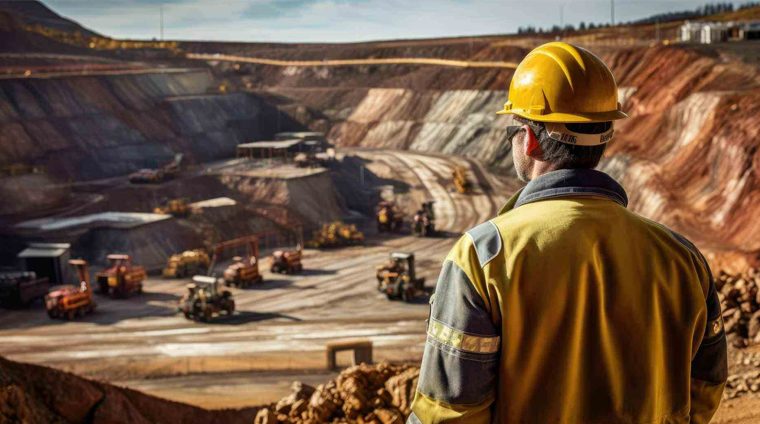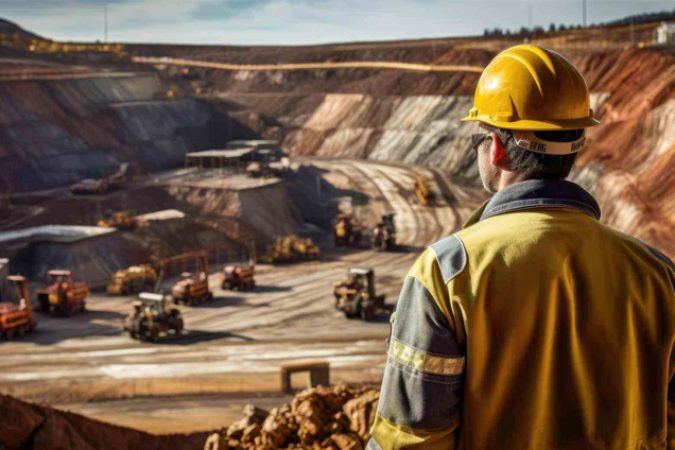GMSGT-Structural Geology and Tectonics in Mineral Exploration 02
Mar/2025
English
A course by
Description
Introduction
This intermediate course builds upon foundational knowledge and focuses on advanced structural analysis and tectonic models for mineral exploration. Participants will learn how to interpret structural data, predict ore locations, and conduct field mapping for phosphate, gold, and bauxite deposits.
Date
Day | Time | Price | Country |
|---|---|---|---|
Mon – Wed | 8:00 – 10:00 | $5/hrs | Turkey |
Tue – Thu | 18:00 – 19:00 | $5/hrs | Turkey |
Wed – Fri | 20:00 – 21:00 | $5/hrs | Turkey |
Sat – Sun | 18:00 – 19:00 20:00 – 21:00 | $8/hrs | Turkey |
This Training Course Will Highlight
- Advanced mapping and data collection techniques in structural geology.
- Fracture systems, fault kinematics, and their control on ore deposits.
- Application of tectonic models to mineral exploration.
- Field-based structural interpretation for mineral targeting.
Objectives
- Understand the fundamentals of structural geology and its relevance to mineral deposits.
- Learn about the relationship between tectonic processes and mineral formation.
- Identify structural controls on ore deposits (faults, shear zones, and fold systems).
- Gain an overview of field mapping techniques for structural geology.
- Develop an understanding of tectonic settings associated with phosphate, gold, and bauxite mineralization.
Training Methodology
- Instructor-led lectures on structural geology fundamentals.
- Hand specimen analysis of common structural features.
- Basic field mapping exercises using geological maps.
- Structural interpretation of cross-sections and field data.
- Discussion of case studies related to structural controls on mineralization.
- Case Study: The impact of structural features on a phosphate, gold, or bauxite deposit.
Organizational Impact
- Enhances early-stage exploration capabilities through structural mapping.
- Improves exploration targeting efficiency by understanding structural controls.
- Strengthens interdisciplinary collaboration between geologists and mining engineers.
- Provides a systematic approach to identifying and evaluating mineralized zones.
- Supports better decision-making in exploration project planning.
Personal Impact
- Develops fundamental skills in structural geology and field mapping.
- Enhances interpretation of structural features in exploration.
- Strengthens knowledge of ore deposit formation and geological settings.
- Expands career opportunities in mineral exploration and economic geology.
- Builds confidence in structural data collection and analysis.
Who Should Attend?
- Entry-level geologists and mining engineers.
- Junior exploration geologists in mining companies.
- Government and regulatory personnel involved in mining oversight.
- Environmental geologists working in mine development and land use planning.
- Undergraduate geology and mining students.
- Technical staff in geological survey organizations.
- Professionals transitioning into the field of mineral exploration.
- Ore body geometry and structural prediction methods.
Course Outline
Day 1
Structural Analysis in Mineral Exploration- Deformation processes and ore deposit formation.
- Rock rheology and structural controls on mineralization.
- Field recognition of deformation structures.
- Kinematic indicators in fault and shear zones.
- Structural mapping in a gold mining district.
Day 2
Fault Systems, Shear Zones, and Ore Body Geometry- Structural interpretation of major fault systems.
- Shear zone-hosted gold deposits – characteristics and formation.
- Fault reactivation and secondary mineralization zones.
- Ore body geometry and structural prediction models.
- Gold mineralization in a deformed greenstone belt.
Day 3
Tectonic Settings and Structural Mapping- Mapping mineralized shear zones and fold systems.
- Field measurement of fault slip indicators.
- Tectonic setting of phosphate, gold, and bauxite deposits.
- Mineral belts and their structural framework.
- Structural mapping of a bauxite-rich province.
Day 4
Structural Controls on Mineralization and Exploration Targeting- Structural influences on hydrothermal mineral deposits focusing on gold and associated alteration halos.
- Strain partitioning and its effect on ore deposition understanding how stress distribution affects mineralization.
- Fracture-controlled bauxite deposits relationship between weathering, karst features, and ore concentration.
- Field-based structural indicators for mineral targeting identifying structures that favor ore accumulation.
- Predictive structural modeling in mineral exploration integrating geological, geophysical, and geochemical data for target generation.
- Structural targeting for gold deposits in orogenic settings.
Day 5
Advanced Structural Mapping and Data Integration in Exploration- Structural geology mapping techniques in mineral exploration field mapping workflows and tools.
- Use of stereonets and rose diagrams for structural data interpretation plotting and analyzing structural measurements.
- Integration of structural, geophysical, and geochemical datasets improving exploration efficiency.
- Field validation of structural targets using trenching, drilling, and mapping to confirm mineralized structures.
- Challenges and common pitfalls in structural geology interpretation avoiding misinterpretation in exploration.
Cancellation policy
no refund is accepted
Certificate


Free
Skill level Intermediate
100% positive reviews
Language: English
Assessments: Self
Step Into a World of Knowledge and Growth
Imagine a place where learning is not just about theory
Courses you might be interested in
Introduction This advanced training course is designed for senior geologists, structural geologists, and exploration managers who seek a comprehensive understanding of structural geology and tectonics in mineral exploration. The course...
-
0 Lessons
Free
Introduction This beginner-level course provides an introduction to structural geology and tectonics and their significance in mineral exploration. Participants will learn fundamental concepts related to rock deformation, faulting, folding, and...
-
0 Lessons
Free
Free

